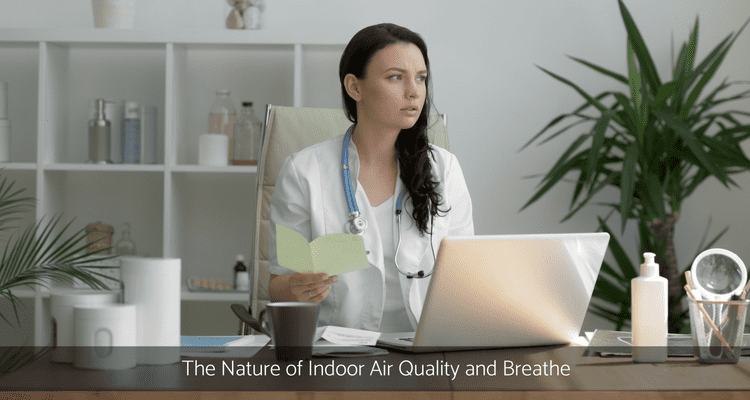Whilst many people are aware of air pollution outside being of concern, far fewer people take the time to consider their indoor air quality. Less smelly, less talked about, and definitely less obvious.
Just think about it. Consider how much time we spend indoors, it’s a wonder that there isn’t more research done about indoor air quality. We live and breathe in it every day.
Generally, office buildings are considered to be safe and healthy working environments. Right?
Lets crunch the numbers. Indoor air contains 2 to 5 times more contaminants and pollutants than outdoor air according to the US EPA (2015) and sometimes as much as 100 times more than outdoor.
This in itself exposes indoor air pollution as one of the most serious environmental threats to your health! Yet are you aware, no agency can regulate it!
Consider the fact that
- the average person spends 90% of their time inside buildings
- and the association with the numerous adverse health effects
- and unidentified health symptoms suffered today
- complemented by the newer, tightly constructed buildings at the expense of conserving energy and costs.
This is not the whole story!
The reduction in natural ventilation has minimized the infiltration of outside air and contributed to trapping pollutants and building up indoor air contaminant levels.
Makes sense, right?
Lets take a look at a couple of characteristics
- temperature,
- humidity,
- ventilation rate (building air exchange rate)
- and the adequacy of ventilation systems,
- the nature of the contaminant and emission rate,
- and the ability of interior materials to adsorb and release pollutants.
According to Indoor Air (2004), IAQ is a main cause of allergies and other hypersensitivity reactions and airway infections.
According to OSHA (n.d) poor IAQ has been tied to symptoms like:
- headaches,
- fatigue,
- trouble concentrating,
- and irritation of the eyes, nose, throat and lungs.
- Some specific diseases have been linked to specific air contaminants or indoor environments, like asthma with damp indoor environments.
Mould growth you can physically see, often is a big indicator that something is not quite right. Whilst mould is a natural organism, it can be toxic to your health if it is found indoors and in sufficient quantities.
Mould simply needs moisture, low ventilation and organic matter on which to grow. You can begin to see how it becomes an issue for many people.
Don’t let your indoor air quality make you and your loved ones unwell.
To assess the indoor air quality of your workplace, contact Carol from Mitey Fresh. She is a qualified Building Biologist and is passionate about helping you to address environmental issues within your work place that make you sick.
References:
US Environmental Protection Agency, 2015 Biological Pollutants’ Impact on Indoor Air Quality, (Online). Available: https://www.epa.gov/indoor-air-quality-iaq/biological-pollutants-impact-indoor-air-quality [June 3, 2016]
Indoor Air 2004. On the History of Indoor Air Quality and Health, 2004; 14 (Suppl 7); 51-58 (Online). Available: http://onlinelibrary.wiley.com/doi/10.1111/j.1600-0668.2004.00273.x/full [June 22, 2016]
Occupational Safety & Health Administration, n.d, Indoor Air Quality Investigation (Online). Available: https://www.osha.gov/dts/osta/otm/otm_iii/otm_iii_2.html [20 May, 2016]





